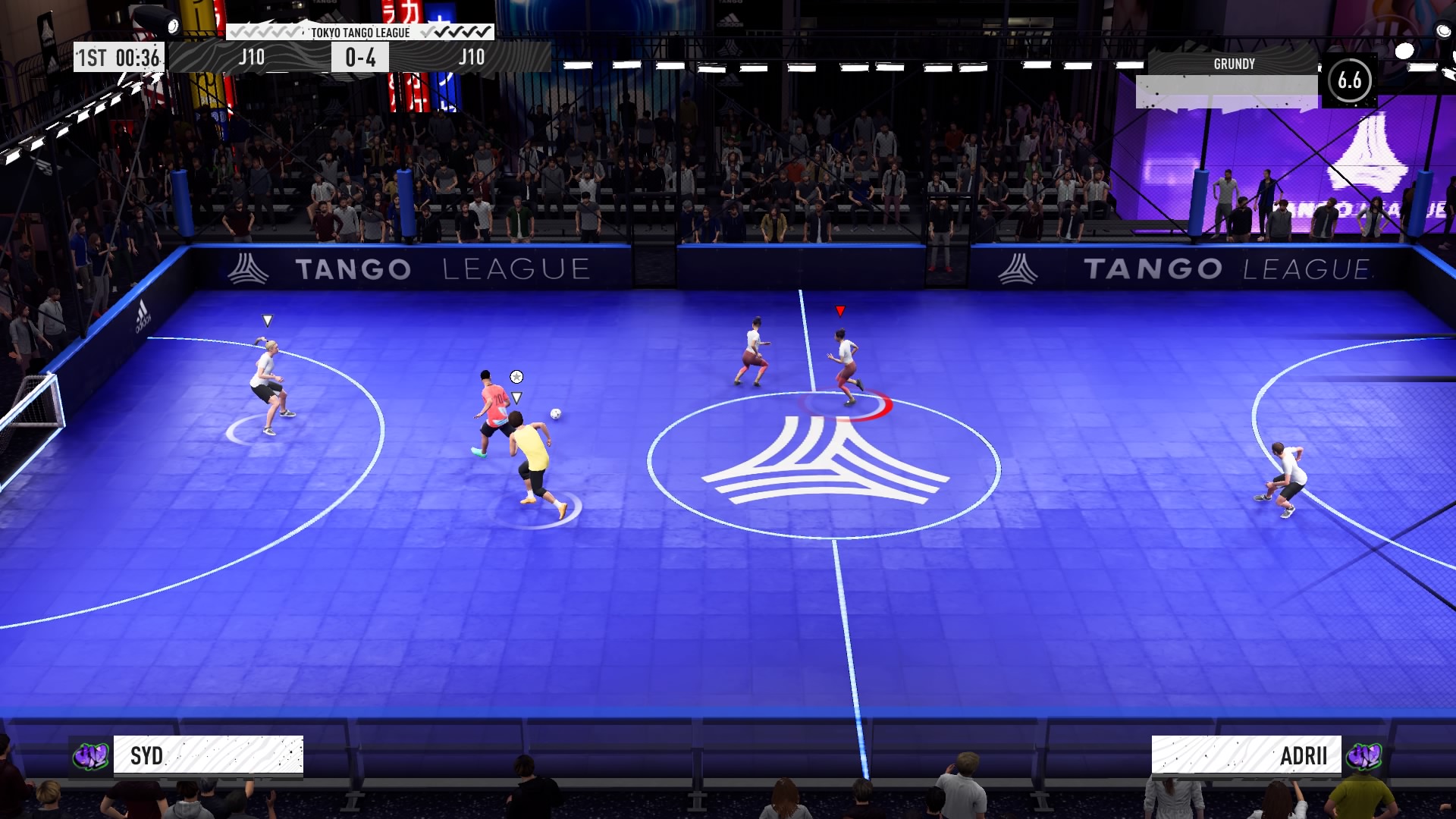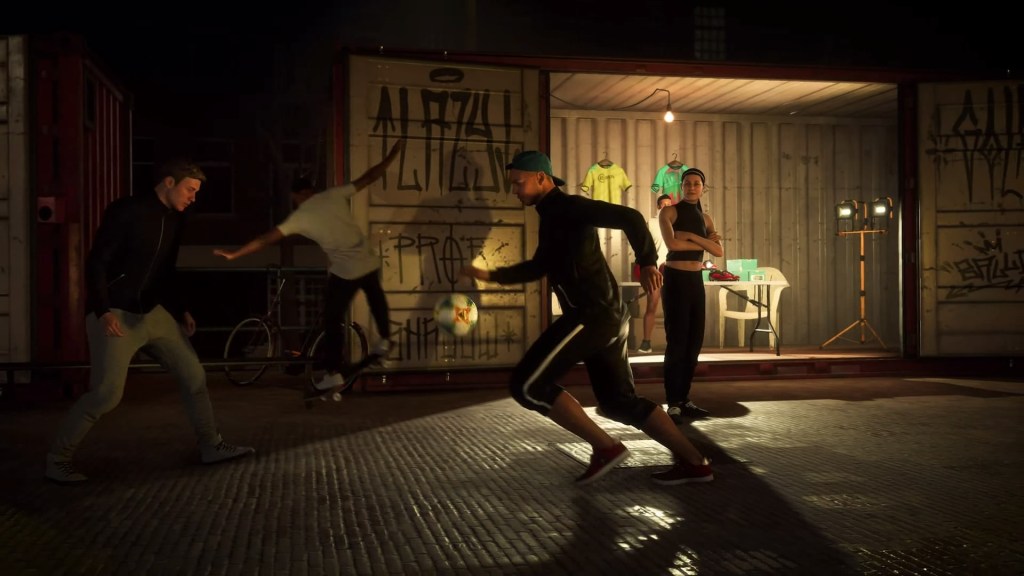Right on the heels of eFootball Pro Evolution Soccer 2020 firing a solid shot across the bow of EA’s battle-tested workhorse, it was high time that FIFA 20 had the chance to return volley. Taking aim at Konami’s bare-bones product, the world’s best-selling footie simulator has brought along a bevy of new ways to experience the pitch. Can FIFA’s formulaic gameplay overcome the sheer quality of Pro Evo’s mechanics or is this another case where less is very much more?
Football or Soccer?
In order to truly answer the aforementioned question, it’s important to determine what exactly you’re looking for in a football game. And yes, I did just call it a “football game.” If you have a problem with that you can take it up with the rest of the globe outside of North America. Anyway… FIFA has continuously been building on top of their rock solid mechanics, which have been fairly cemented in place since fully transitioning to the Frostbite engine. For this reason, it should come as no surprise that a majority of the changes to the core simulation are essentially variations on the same tune they’ve been trumpeting for several years.
If you’re a returning player from last season, you’ll likely recall that the gameplay enhancements mainly revolved around providing better control and finesse on the offensive side of the ball. Seemingly in direct response to this, this newest entry counters with far more fine-tuned controls on the defensive half of the pitch.
While many will celebrate this as a generous step towards equality on both ends of the field, I personally wasn’t as much of a fan. Why is that you ask? Bluntly put, I preferred to be a stubbornly lazy defensive player. For me, there was nothing better than being able to mindlessly bowl through strikers without a second thought to tact or skill. My world came crumbling down last season, as character models were suddenly imbued with the ability to prance around me like an aggressively dribbling ballerina. I was able to persevere to some extent, obliviously struggling to maintain the upper hand, but now matters have taken a turn for the worst. Now they’re actually expecting me to TRY and play defense. *Shudder*
One of the biggest advancements consists of nerfing of the habitual “easy button” that previously was employed to automatically keep a defender’s ass between the ball-handler and the keeper. We’re now expected to actually position a body manually, while in the “defensive breakdown” stance. The key becomes finding a way to funnel the opposition away from the goal. Simultaneously, it’s also critical to stick close enough to the adversary’s hip that it impacts visibility and the player’s chances to successfully dump the rock to a teammate. Additionally, AI characters that are away from the ball also do a substantially better job congesting what has previously been far less obstructed passing lanes.

Overly Defensive
Though I joked about it a bit earlier, these were developments that realistically needed to happen this season. Now that forwards have more mobility than ever before, it only made sense to compensate in this manner, in order to restore a proverbial balance to the force. That said, defense is now far less pick-up-and-play friendly than prior seasons. However, for those passionate about the authenticity of their simulations, this is an extremely welcome additional to FIFA’s already deep stable of nuanced mechanics. It’s also worth noting that those who previously passed circles around the opposition before slamming home strikes like they were running a bowling alley are not going to be able to exploit this going forward. Regardless of the difficulty level, AI players are taking full advantage of these newly introduced tools. Be ready to get humbled a bit more than you were previously accustomed.
As much as I love increased competition and even a slight boost in the tactics of AI players, there was something that’s negatively impacted the formula every-so-slightly. The speed at which the game has traditionally been played feels a bit slower this season. Now, I’m not saying that the gameplay is slower as in framerates or animation quality. In this case I’m more talking about the actual flow of the action. This may potentially be a byproduct of enhanced physics but it feels like more friction is being applied to the ball while it’s in motion. This leads to cases where passes that would’ve previously led a teammate, allowing them to perfectly receive the ball in stride, will now more easily run out of momentum. This impact is even further emphasized, the wider the distance between sender and receiver.
I fully realize that this is a more realistic interpretation of the sport. Unfortunately, it also takes a toll on the pace of the action. Players will be able to move just as quick as they ever have, but the ball suddenly doesn’t keep pace, rendering the process of matriculating the ball down the pitch more akin to an accordion offense. One of my favorite aspects of prior FIFAs was just how silky smooth the ball-movement felt. Admittedly, this is more in tune with the way an actual match normally plays out, but I’ll be damned if I didn’t miss offensive attacks that had more in common with an NHL game than something you’d find in the NBA.
One more minor gripe may very well be my own fault. I’m playing FIFA 20 on a launch PS4, not one of those fancy new-fangled PS4 Pro consoles. Keeping that in mind, I’m pretty sure the actual on-field visuals lack the sharply detailed textures found in prior installments. Especially when attempting to advance the ball quickly, player models looked fuzzier than I’ve grown accustomed to in the Frostbite engine. Maybe this isn’t the case on the Pro model console, but there really shouldn’t be any good reason for a game to look worse, year-over-year. Hopefully this is something that can be remedied in a future patch, but only time will tell.

It’s a Re-Volta
Departing from the standard action found on the traditional pitch, this year’s biggest new mode actually introduces numerous new ways to engage in a rawer soccer experience. Entitled Volta, this new stand-alone mode is centered around the now not-so-underground culture of street football. Remember FIFA Street way back in the day? It’s essentially that, only with more structure, realism, and entertainment to boot. Gone are the days of dysmorphic character models, instead being replaced with the standard FIFA models.
Featuring both male and female characters, Volta can be played several different ways, with the main story campaign jumping out, front-and-center. Following the trend set by the most recent Madden, “The Journey,” which had previously been a narrative cornerstone of the franchise, is nowhere to be found. Instead of Alex Hunter’s more compelling singular story arch, players are treated to a trite, if not heavily cliched storyline of aspiring footballers looking to succeed at the global level. Fortunately, the main campaign only lasts a handful of hours, then giving way for the online mode to step into the spotlight.
The street gameplay itself was a bit of a mixed bag. Though the mode seems fixated on flashy moves and exotic finishes, the courts can actually limit that capability dramatically. On some of the smaller 3v3 fields, the claustrophobic setting doesn’t leave much room to freestyle. Granted, this opens up a bit more when moving on to the 5v5 arenas, but early on it almost feels like the game itself doesn’t understand what makes it special. Plus, it doesn’t really help matters much when you’re playing alongside AI teammates that have the collective IQ of a slab of meatloaf. Nitpicks aside, when it’s at its best, Volta easily stands on its own as the best new introduction to the franchise in eons.

In a dose of, “It’s about fuckin’ time,” FIFA 20 is also home to the long-awaited, not to mention extremely overdue, enhanced career mode. There are far more opportunities to interact with fellow squadmates, which is a very welcome change of pace. Being able to encourage a fellow player or listen to them endlessly bitch about their lot in life isn’t anything that will extensively move the needle one way or another, but it at least attempts to humanize bots that previously acted like soulless automatons.
A last element that received quite a bit of attention is the post-match press conferences. Sure, sometimes the dialog is about as wooden as a ventriloquist dummy, but it actually has consequences that extend beyond the mere interview. It’s nice to see these elements impact the overall flow of a career and even get called back upon from time-to-time. Once again, these are far from game changers, but baby steps in the right direction are far superior to the stagnation that had been occurring over the past few years in the career space.
It may not be a tremendous shift in the landscape of soccer titles, but FIFA 20 has certainly proved to be a fertile ground for experimentation within EA Sports. However, as is the case with most first-time features and modes, the game is a bit of a mixed bag. There are a handful of fantastic new ideas that lack proper execution, which are countered out by enhancements to the existing experience that finally respond to criticisms that have plagued the brand for years. Thankfully, the potentially of the newly introduced Volta mode is damn near endless. If you’ve been looking for a reason to take the plunge and upgrade, consider this your penalty kick in the pants.
FIFA 20 review code provided by publisher. Reviewed on PS4. For more information on scoring, please read our Review Policy.
-
Volta is a fresh new canvas to experience the sport
-
Defensive enhancements force players out of their comfort zone
-
Career mode gets a welcome new coat of paint
-
You can no longer play lazy defense
-
Volta feels too claustrophobic on 3v3 courts
-
Why do the textures look so fuzzy?





